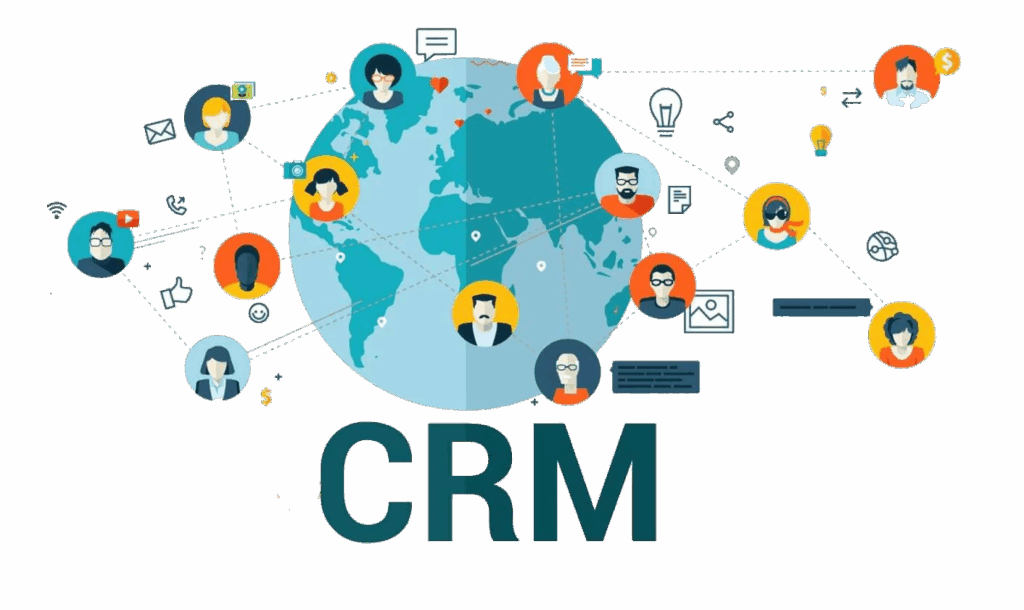Customer Relationship Management (CRM) systems are vital for modern businesses, providing streamlined processes, data-driven insights, and improved customer engagement. However, merely implementing a CRM isn’t enough success hinges on company-wide adoption and effective training.
At ThoughtLogik, we specialise in helping businesses unlock the full potential of their CRM systems. In this guide, we’ll explore the importance of CRM adoption, common challenges, and actionable strategies to ensure your team fully leverages your CRM for optimal efficiency and growth.
The Business Benefits of Effective CRM Adoption
- Increased Revenue: Studies by Nucleus Research show that the ROI for CRM is £6.87 for every pound spent (approximately $8.71), thanks to improved customer retention and streamlined processes.
- Enhanced Customer Satisfaction: A CRM system helps businesses deliver personalised experiences, which can increase customer satisfaction by up to 50%, as reported by McKinsey.
- Improved Productivity: CRMs can reduce the time spent on manual tasks by up to 20%, enabling sales and support teams to focus on high-value activities.
Overcoming Resistance to CRM Adoption
One of the biggest barriers to CRM success is employee resistance. Many employees view CRMs as complex, time-consuming, or designed primarily for management oversight. To ensure smooth adoption, businesses must proactively address these concerns.
1 . Clearly Communicate CRM Benefits
- Explain how the CRM simplifies daily tasks, such as reducing manual data entry and providing instant access to customer information.
- Share success stories from other businesses or internal teams that have benefited from CRM adoption.
2 . Involve Employees in the Process
- Explain how the CRM simplifies daily tasks, such as reducing manual data entry and providing instant access to customer information.
- Share success stories from other businesses or internal teams that have benefited from CRM adoption.
- Engage key team members in the CRM selection and customization process to ensure alignment with business needs.
- Start with a pilot group to test and refine workflows before rolling out the system company-wide.
3. Address Concerns Proactively
- Create open forums for employees to voice their concerns and ask questions.
- Emphasize that the CRM is a tool for productivity, not performance monitoring.
Tailored Training Strategies for Effective CRM Usage
Training is the cornerstone of CRM success. A generic approach won’t work training must be customized to different roles and learning styles.
1. Role-Based Training Modules
- Sales Teams: Lead management, sales pipeline tracking, automated follow-ups.
- Customer Service Teams: Ticket management, customer history access, issue resolution.
- Marketing Teams: Campaign tracking, customer segmentation, and analytics.
2. Diverse Training Formats
- Interactive Workshops:Hands-on sessions for real-time problem-solving.
- E-Learning Modules: Self-paced learning for flexibility.
- On-Demand Resources:Video tutorials, FAQs, and best practice guides.
3. Practical Application & CRM Champions
- Use real (anonymized) customer data in training to illustrate real-world applications.
- Appoint CRM champions—team members who serve as internal experts to support their peers.
Tracking and Improving CRM Adoption
CRM adoption isn’t a one-time task it requires ongoing monitoring and refinement. ThoughtLogik helps businesses track usage and optimize CRM performance through:

1. Key CRM Usage Metrics
- Login Rates: Are employees using the system daily?
- Data Completeness: Are customer records consistently updated?
- Feature Utilization: Identifying underused tools and optimizing workflows.
2. Regular Feedback & Iteration
- Conduct surveys and feedback sessions to identify pain points.
- Continuously refine CRM workflows based on user input.
3. Continuous Training & Recognition
- Provide refresher training and introduce new features gradually.
- Recognize and reward employees who effectively use the CRM to drive business success.
Best Practices for Long-Term CRM Success
- Set Clear Usage Expectations: Define measurable CRM adoption goals.
- Simplify the User Experience:Customize the CRM interface to remove unnecessary features.
- Integrate with Existing Tools: Ensure seamless integration with email, calendars, and accounting software.
- Lead by Example: Encourage leadership to actively use the CRM, reinforcing its importance in daily operations.
You're In Expert Hands – Let's Talk!
Discover how we can transform your business with Zoho or Odoo. Book your free consultation today and take the first step toward implementing a scalable, efficient system for your success.
CONTACT US


